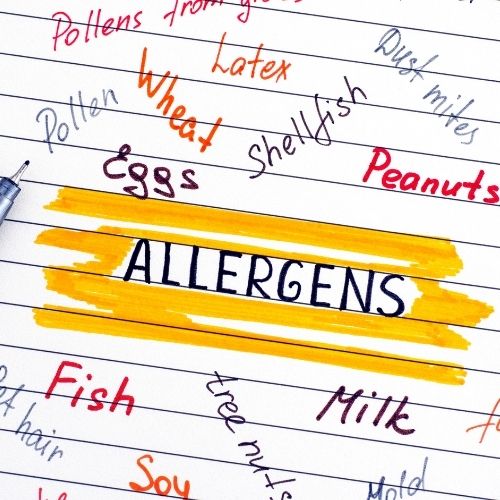Is junk food contributing to childhood allergies?

Highlights
- 36.9% of children in the MatCH study had one or more allergies.
- Children who ate sweet or savoury snacks twice a day were 1.2 times more likely to have a food allergy.
- Children who consumed more reduced-fat dairy were less likely to have asthma.
The rates of childhood food allergies, non-food allergies, asthma, respiratory allergies like hayfever, and skin allergies like dermatitis and eczema have been increasing steadily for the past 30 years. The severity of these allergies and the frequency of life-threatening anaphylactic reactions are also on the rise. Almost 40% of Australian children suffer from allergies.
What do diet patterns have to do with allergies?
The increasing prevalence of allergies suggests that genetics isn’t the only cause; there must be some other environmental or lifestyle factors at work. Our modern Western diet, which is high in salt, fat, sugars and processed foods, is responsible for the rising rates of obesity, cancers, diabetes and heart disease. Could it be linked to the rise in allergies as well?
Previous research looking at children’s diets has linked snacks and junk foods to increased risks of asthma, eczema, and rhino-conjunctivitis in children. Other studies have found that diets high in fruits, cereals, nuts, oils, milk and fish have a protective effect. However, we might be missing part of the allergy story by only analysing the whole foods in children’s diets.
People who eat a lot of one food type will also tend to eat more of the foods that complement their food preferences. For example, the ‘protective’ foods listed above sound a lot like the Mediterranean diet. It is important to consider whether the protection comes from the fish, or some nutrient in the nuts or oils, or perhaps is it due to a complex interaction between nutrients as all the foods are broken down during digestion.
Our dietary patterns could be cultural or to do with other factors like the availability of foods, advertising, purchasing power, or time and ability we have to prepare foods.
Dietary patterns and allergies in children from the MatCH study
For this study, the researchers looked at broad dietary patterns in children from the Mothers and their Children’s Health (MatCH) study. MatCH is a substudy of the Australian Longitudinal Study on Women’s Health (ALSWH). The researchers used survey data from 4,400 children aged 5-12. The children’s mothers reported the type and severity of their children’s allergies which they categorised as: non-food allergies; food or digestive allergies; respiratory allergies (including hay fever); eczema, dermatitis or any kind of skin allergies; and asthma. The mothers also reported on how often their children ate different types of food each day.
There were four dietary patterns amongst the MatCH study children: high-sugar and fast food, healthy, sweet and savoury snacks, and reduced-fat dairy. Only two of these dietary patterns were linked with allergies:
- Children in the ‘sweet and savoury snacks’ pattern were 1.2 times more likely to have a food allergy than children with a lower intake of snacks.
- Children in the ‘reduced fat dairy pattern’ group were less likely to have asthma.
Will changing diets reduce childhood allergies?
The children in the sweet and savoury snacks pattern ate biscuits, chips, processed meats, lollies and spreads twice a day. These types of foods are lunchbox staples for time-poor parents. They are convenient, often have longer expiry dates than fresh fruit and vegetables, and many pre-packaged snacks don’t require refrigeration – a serious consideration in the Australian summer. However, the Australian dietary guidelines recommend only one serving per day of non-core foods.
We can’t say for sure that changing your family’s diet will have an impact on allergies. This research shows a link between food allergies and children’s diets. To establish if eating a diet high in sweet and savoury snacks causes allergies, we would need to monitor young children’s diets for a number of years and see if they go on to develop allergies. The Australian Dietary Guidelines are designed to fuel children’s growth and development. Setting healthy diet patterns as early as possible will give children the best possible start.
Policy Implications
This research does add to policy discussions around children’s diets in a range of settings. Australian parents could be supported to provide healthy meal options through:
- Increased education on the dietary guidelines and practical ways to implement the guidelines
- Limiting or banning junk food advertising to children
- Providing nutritious school lunches to all children
Learn more
Contact:
Citation
Leticia W. Ribeiro, Katrina M. Moss, Gita D. Mishra, Dietary patterns and allergy in children aged 5–12 years in Australia: Findings from the Mothers and Their Children’s Health study, Allergology International, Volume 69, Issue 4, 2020, Pages 628-629
This research is free to read at: https://doi.org/10.1016/j.alit.2020.04.012

